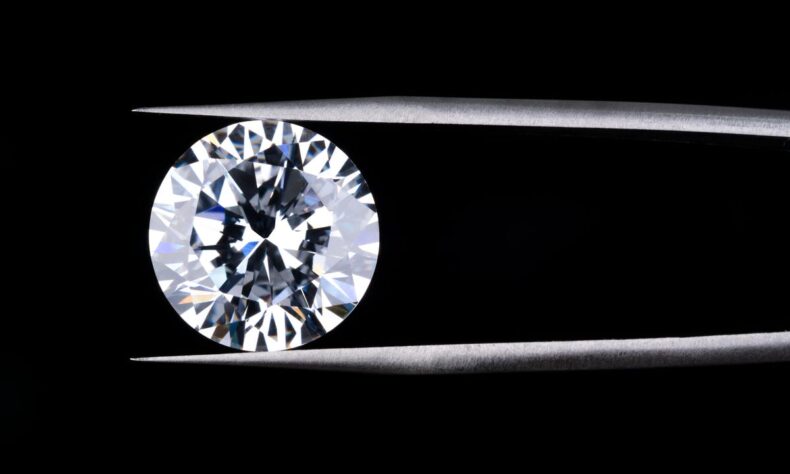
Lab grown diamonds, also known as cultured diamonds, are produced in a lab by heating the carbon source until it melts and recrystallizing it into diamond. Because they’re man-made, these diamonds have been available since 1954; however, their popularity has only recently been growing, thanks to new research on their origins and the advancement of diamond technology. The result? Cultured diamonds may soon become the new standard and take over the market when it comes to purchasing engagement rings and other fine jewelry.
Lab grown diamonds are chemically identical to mined diamonds, but they lack the environmental impact of the latter and cut out human rights abuses associated with diamond mining in some regions of the world. However, until recently, lab grown diamonds have been much more expensive than mined diamonds – but this may be about to change. This article explores why the cost of lab grown diamonds has been so high up until now, how this may be changing and whether Lab grown Diamond Manufacturer could be the new standard for what we consider the diamond standard.
What are lab grown diamonds?
While there are differences between lab-grown and mined diamonds, they’re not very obvious to an untrained eye. Often, a well-trained jeweler can only tell them apart using lab equipment. If you want to know more about how they differ, read our post on what differentiates a mined diamond from a lab-grown one. Because many people don’t realize that they’re two completely different products, claims like real diamonds are used by both suppliers and customers alike when trying to push particular brands or services. In fact, many brands will use mined diamonds as a selling point when selling their products—even though its pretty much irrelevant for 99% of consumers!
Types of Lab Grown Diamonds
Two main types of lab grown diamonds are created. Type I diamonds, or synthetic diamonds, are produced by fusing two smaller pieces together with heat and high pressure. Type II diamonds are created through a similar process, but with metal catalyst at a much higher temperature than Type I stones. The outcome is a diamond that’s nearly identical to its natural counterpart, but they cost significantly less because it’s not mined from underground deposits.
What are Moissanite & White Sapphire?
Moissanite, a lab-grown jewel that closely resembles a diamond, has exploded in popularity over recent years. What’s been missing from its rise to fame, however, is white sapphire. While moissanite is currently available in colors from blue to yellow and pink, there have been few options for white sapphire aside from diamonds themselves. In fact, white sapphires are just as rare and valuable as their colorful counterparts — but with a much more accessible price tag! The best part? You can get your hands on one right now at jewelry stores like Blue Nile!
Comparisons between natural and synthetic diamonds
Natural diamonds are formed millions of years ago. These days, they’re mined in places like South Africa and Canada. Although a lot of people still believe synthetic diamonds aren’t as pretty or durable as natural ones, it’s actually fairly easy to distinguish between them; all you need is a jeweler’s loupe (magnifying glass) or a microscope. Natural diamonds have imperfections because they’re real stones that come from under our planet’s surface; CVD diamonds, on the other hand, are flawless because they’re man-made products created in laboratories using high temperatures and pressure. Because synthetic diamonds are completely identical to those found in nature, if you want something really unique and incredibly rare, synthetic could be for you!
Where can you buy them?
While lab-grown diamonds are still pretty new to most people, they’re already being sold at major retailers like Walmart and Target. You can also find them at individual diamond dealers like Bhandari lab grown diamonds. But it’s important to remember that while they may look just like regular diamonds, their quality can vary widely. So, if you’re thinking about investing in lab-grown gems for their potential resale value down the road, be sure to check them out with a jeweler before you buy.
Future Direction for Synthetic Gemstones in Jewelry
The manufacturing and selling of Lab Created Diamond Manufacturer has just been a $5 billion dollar industry for about ten years, so it is natural to question how far its future development will go. Will synthetic gemstones supplant their naturally grown counterparts, or even be viewed as acceptable enough to be sold in jewelry stores? That depends on several factors. Over time, man-made gems will slowly become more popular as they reach a greater level of quality and durability. In order to market synthetic gems effectively, manufacturers must produce them at a profit while minimizing price increases—no easy task. Manufacturers also need to stay abreast of any regulatory changes that would affect their product’s availability or legal use.





